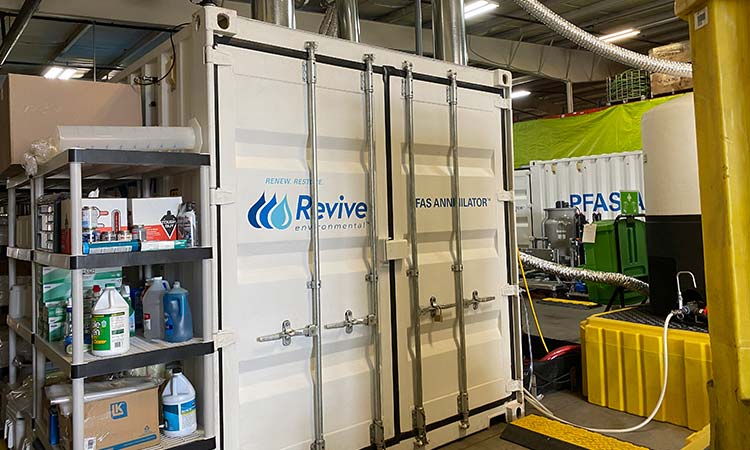The race to destroy PFAS, the forever chemicals

The PFAS sample slides around the inside of the plastic jar when I swirl it, dark and murky, like thin maple syrup. For many, these toxic so-called “forever chemicals” amount to something of a specter, having crept into our lives—and bodies—quietly for more than half a century. In the environment, PFAS are clear and odorless. We may hear about them in the headlines, consider them when we turn on the tap for a glass of water or a shower, but we don’t see them. We can’t touch them. Except that’s exactly what I find myself doing.
PFAS stands for “per- and polyfluoroalkyl substances,” a family of upwards of 15,000 or more human-made and incredibly durable chemical compounds that have been used in countless industrial and consumer applications for decades. Firefighting foams, waterproof hiking boots, raincoats, nonstick frying pans, dental floss, lipstick, and even the ink used to label packaging—all can contain PFAS. The compounds are ubiquitous in drinking water and soil, even migrating to Arctic sea ice. PFAS are called forever chemicals because once present in the environment, they do not degrade or break down. They accumulate, are transferred throughout the watershed, and ultimately persist.
The quest to reduce the amount of PFAS in the environment is what led me to an industrial park in a southern suburb of Grand Rapids, Michigan. The jar of PFAS concentrate in my hand is part of a demonstration arranged by my hosts, Revive Environmental, during a tour of the company’s PFAS destruction site, one of the first in the country to operate commercially and at scale. A few yards in front of me sits the company’s PFAS “Annihilator” in a white shipping container.
Read the full article here.